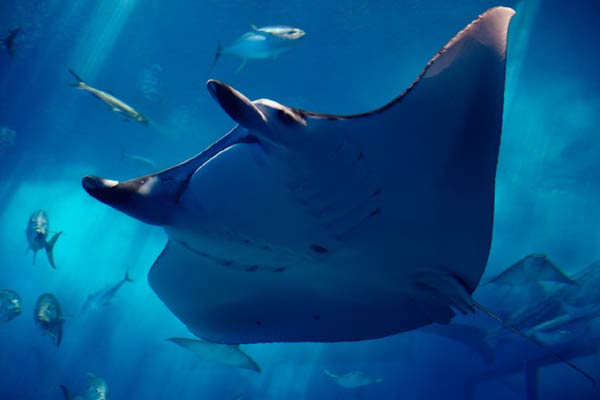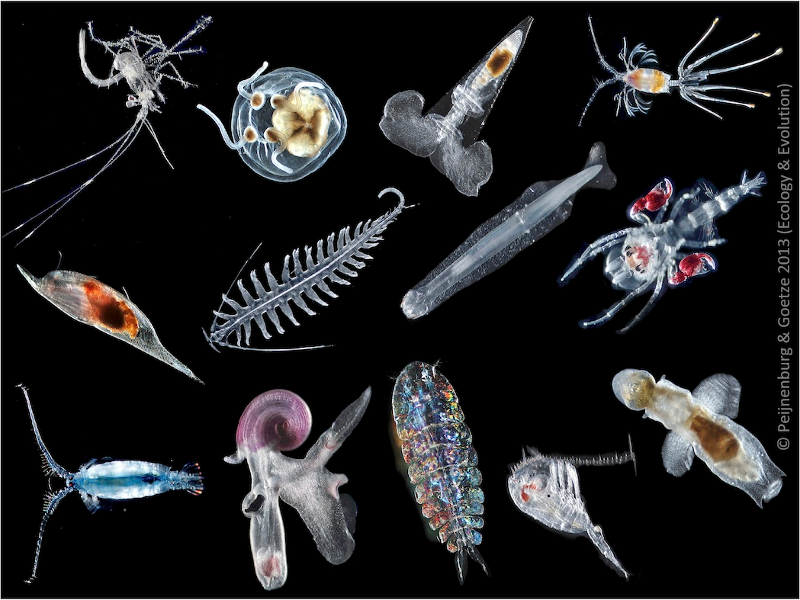The manta ray
The manta ray
Hi friends, I hope you are well and have a good weekend?
I saw a report Saturday afternoon on manta rays, it's really a majestic animal, it looks like it flies, it's amazing.

The manta ray, sometimes also called sea devil is a species of fish of the family of Mobulidae. The manta ray is the largest of the rays, it can measure up to seven meters and weigh two tones.
I thought the manta ray was a marine mammal actually but not at all, it is a cartilaginous fish whose body has two large fins that look like wings.
She has a small tail and a flat head with on each side of the mouth pectoral fins called cephalic fin, it is with this silhouette that we wanted to call it sea devil.
When extended, its fins facilitate the channeling of the flow of water to the mouth for feeding. When she swims, she winds them up to increase her hydrodynamics. It can reach 24 km / h in the event of a leak in the face of danger. His eyes are on the side of his big head.
Its upper jaw has no teeth but the lower one has several teeth whose exact function is unknown.
The back of the manta ray is black or brown in color, and its belly is usually white with dark spots in the lower abdomen. These spots contribute to their identification.
She has gill slits that are placed on her belly.
To move, she simultaneously moves her fins from top to bottom, like a bird, giving the impression that she flies underwater.
Manta Ray of Reef and the Oceanic Manta Ray
The oceanic manta ray is larger than the reef manta ray, it can measure from 4 to 5 meters unlike the reef manta ray which it does rather about 3 meters.
Their color is an easy way to distinguish them. The reef manta ray has a dark dorsal surface with usually two lighter areas on the top of the head, a sort of gradient between the dark of its back and a whitish to greyish tinge whose separation forms a kind of "Y".
While oceanic manta ray, has dark dorsal face and white spots are well marked without degrading. The axis of separation between its white form spots is in turn shaped "T". The tip of its pectoral fins is also white.
The belly of the reef manta ray is white and dotted with a variable number of spots while that of the oceanic manta rays is usually white with very few spots except in the area near the pelvic fins.
Another physical distinction between the two species is the presence of a swelling just after the dorsal fin at the base of the tail of the oceanic manta ray.

Location
The oceanic manta ray occurs in tropical, subtropical and even temperate waters of the world, ie in the eastern Pacific Ocean, Mexico, the Indo-Pacific Basin and Indonesia.
Ocean manta rays migrate according to zooplankton (an animal plankton that feeds on living matter, some species are herbivores and other carnivores, and it goes back to the surface at night to feed on phytoplankton and goes back down to the waters during the day. This way, it escapes predators and saves energy because the temperature is lower.
Way of life
The ocean manta ray lives near the surface of the water and feeds by filtering seawater to capture zooplankton.

The life expectancy of a manta ray is estimated at least 50 years, or even a little longer7
The oceanic manta ray, like the manta ray of the reef, is ovoviviparous. After mating, the female releases an egg that hatched in her uterus. The baby will remain in the mother's womb until it is fully developed and ready to face marine life.
At birth, it is about 1.50 meters tall and will double in its first year of life.
The manta ray breeds approximately every 5 years and its sexual maturity is reached only between 15 to 20 years of existence
Predators
The reef manta ray has few natural predators because of its large size and swimming speed in case of flight from danger.
Only great sharks and orcas can eventually bite a piece of fin before it escapes.
His other predators are of course as always unfortunately men. In fact, their population has been decreasing enormously since about twenty years due to overfishing.
In recent years, the manta ray fishery is motivated by the surge in the course of their gills on the market of traditional Chinese medicine. Pseudo-medicinal virtues are conferred on them, without any proven scientific basis.
I hope this article has you more and that if one day you are lucky enough to be able to observe manta rays, you will be able to tell the difference between an ocean manta ray and a reef manta ray.
Good day to all friends!
Got a little maybe unrelated question:
Can I see planktons in naked eye?
No it's too small ;o)
Ohhhh. I would say you are right most of the time but I see plankton when I'm diving at night it tropical waters. If you shake your hand in the water you can see the plankton produce bioluminescent light like little sparks in the water :)
Hmmmm, excellent post, I think the manta ray is probably one of the most prestigious creatures of the seabed :)
thanx for sharing an informative post. there are thousands of sea creatures that we don't even see them till yet. keep sharing an informative post like that. stay blessed ><3
Really it's amazing.
Such a beautiful sea creature
Has anyone here ever dove with one? I hope I can see one someday!
its a amazing information about majestic animal.I think your information fully correct.Manta rays are large rays belonging to the genus Manta. The larger species, M. birostris, reaches 7 m in width while the smaller, M. alfredi, reaches 5.5 m. Wikipedia
Scientific name: Manta
Mass: Giant oceanic manta ray: 1,600 kg Encyclopedia of Life
Higher classification: Eagle ray
Rank: Genus
Did you know: In the Maldives female manta rays show very strong site fidelity, returning to the same feeding and cleaning stations on a regular basis throughout their adult lives, which span many decades.
This animal really looks different and amazing. Thanks for giving me this information.@luckygupta
Is this your "what creature would you be?" - I thought it was a very in depth post, hope to see more!
this manta is gong to extinction, i hope this article can open mind from illegally hunting. Thanks for sharing